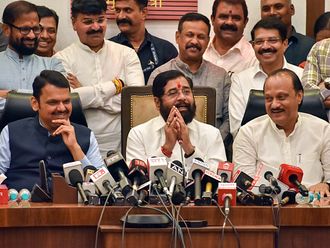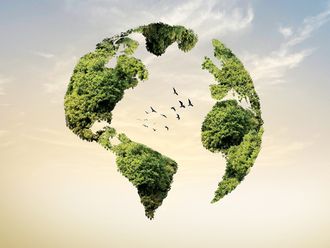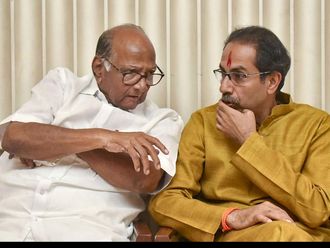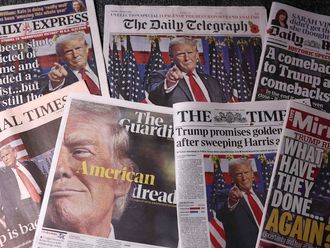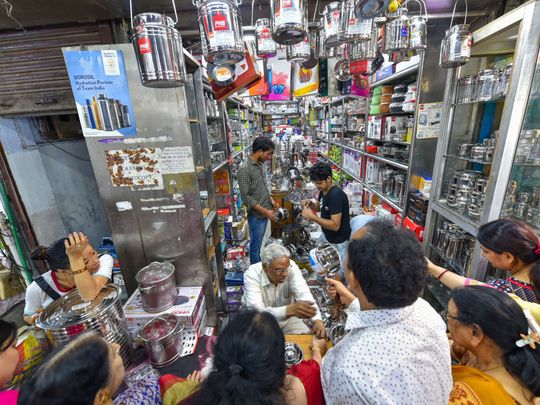
Countries with strong governments often end up with weak economies, and India, after years of impressive growth, risks becoming one of them.
The World Bank recently released its annual report comparing the ease of doing business in 190 countries, and India’s ranking improved to 63rd, up from 77th last year. India — along with Saudi Arabia, Pakistan and China — was among the 10 states that made the most progress. Yet major indicators show that its economy is slowing down sharply.
Narendra Modi came to power in 2014 on the back of the promise that if elected, he would make of India an economic powerhouse that would rival China. This year, after being re-elected, he pledged to turn India into a $5 trillion economy, nearly twice its current size, by 2024.
According to official government data, however, the growth rate of national income for the second quarter of this year was only 5 per cent, down from 8 per cent a year before. The International Monetary Fund’s just-released World Economic Outlook cut India’s growth forecast for 2019 to 6.1 per cent, down from the 7.3 per cent that the organisation had predicted in April. Between 2003 and 2011, growth averaged nearly 8.5 per cent, well exceeding 9 per cent every year between 2005 and 2008. The recent turnaround is sudden and unexpected, and that is a cause for concern.
The decline is visible in the details, big and small. Passenger car sales, which had been falling for a while, dropped by more than 23 per cent. Export growth has been lethargic for a while. Standard & Poor’s recently warned of rising risks in India’s financial sector. The unemployment rate is at a 45-year high.
It’s not just that economic growth is slowing down overall; inequality is rising as well. According to Oxfam, 73 per cent of the wealth generated in India in 2017 went to the richest 1 per cent. Inequality was worsening before the present administration took office, but with growth slowing down and unemployment rising, the effects are more painful.
So how can it be getting easier to do business in India, apparently, even as by some measures, economic growth is decelerating? These simultaneous developments, far from being conflicting, actually explain each other.
The World Bank’s ease-of-doing-business rankings are primarily an assessment of how good a country’s laws look on paper rather than how they operate in practice. By the report’s own account, “approximately two-thirds of the data embedded in the Doing Business indicators are based on a reading of the law.” In other words, a government can adjust its regulations in a way that ensures it will make progress along the index, even if the changes have minimal effect on the ground.
Real growth, on the other hand, depends on how well the laws are actually carried out.
These days in India, divisiveness is increasing throughout society while trust in the government is declining, at least among major economic actors. Consider this indirect indicator of waning confidence, which is often overlooked: what economists call “investment,” the part of national output that leaves out consumables like food, clothing and housing and refers to production that will enhance future productivity, such as the building of machines, factories and infrastructure.
Both a body of economic theory and much real-life evidence, especially from the superfast growth of East Asian economies in the 1980s, suggest that in emerging economies with plentiful labour, a rise in the investment rate boosts overall growth.
India was a low-investment country for many years after independence in 1947. Investment did not exceed 20 per cent of gross domestic product until the late 1970s. It crossed the 30 per cent mark for the first time in 2004-05 and climbed to 39 per cent in 2011-12. India had begun to look like, and grow like, an East Asian economy in the 1980s. But then investment started to decline, and by 2016-17 it was back to around 30 per cent.
A drop in investment is usually connected to a lack of trust in the present and the near future. When businesses worry about a country’s policy environment, they hesitate to sink money into it. A government’s heavy-handed interference in the market — such as the Modi administration’s decision to ban some paper currency in late 2016 — or general fractiousness, in politics or within a bureaucracy, can hurt confidence in the economy.
Economists don’t much like to admit this, but a country’s economic performance depends as much on its politics as on its economic policies. Starting at independence, India invested in political institutions first — establishing democracy, free speech, independent media, secularism and protections for minority rights. After World War II, as nations broke free from the yoke of imperialism, there were other progressive leaders who tried this — in Indonesia and Ghana, for example — but those efforts did not last. Coups, chaos or conflict caused democracy to collapse in one nation after another, bringing in military rule or religious strife. India was an exception, with its liberal Constitution, regular elections and powerful Supreme Court.
India’s growth in the early decades after independence was sluggish, though. One can debate whether India’s early investment in progressive politics was the right choice. (I think it was.) But having made that investment, it would be a colossal mistake now to squander the political capital that choice generated — especially after the economy finally did take off, first in early 1990s and spectacularly so after 2003.
The fundamentals of India’s economy remain strong. The current slowdown is mostly collateral damage, the result of an erosion of trust caused by the country’s drift toward illiberalism. India can boost its economy again by reclaiming and building on its progressive heritage.
Kaushik Basu was Chief Economist of the World Bank from 2012 to 2016
New York Times



